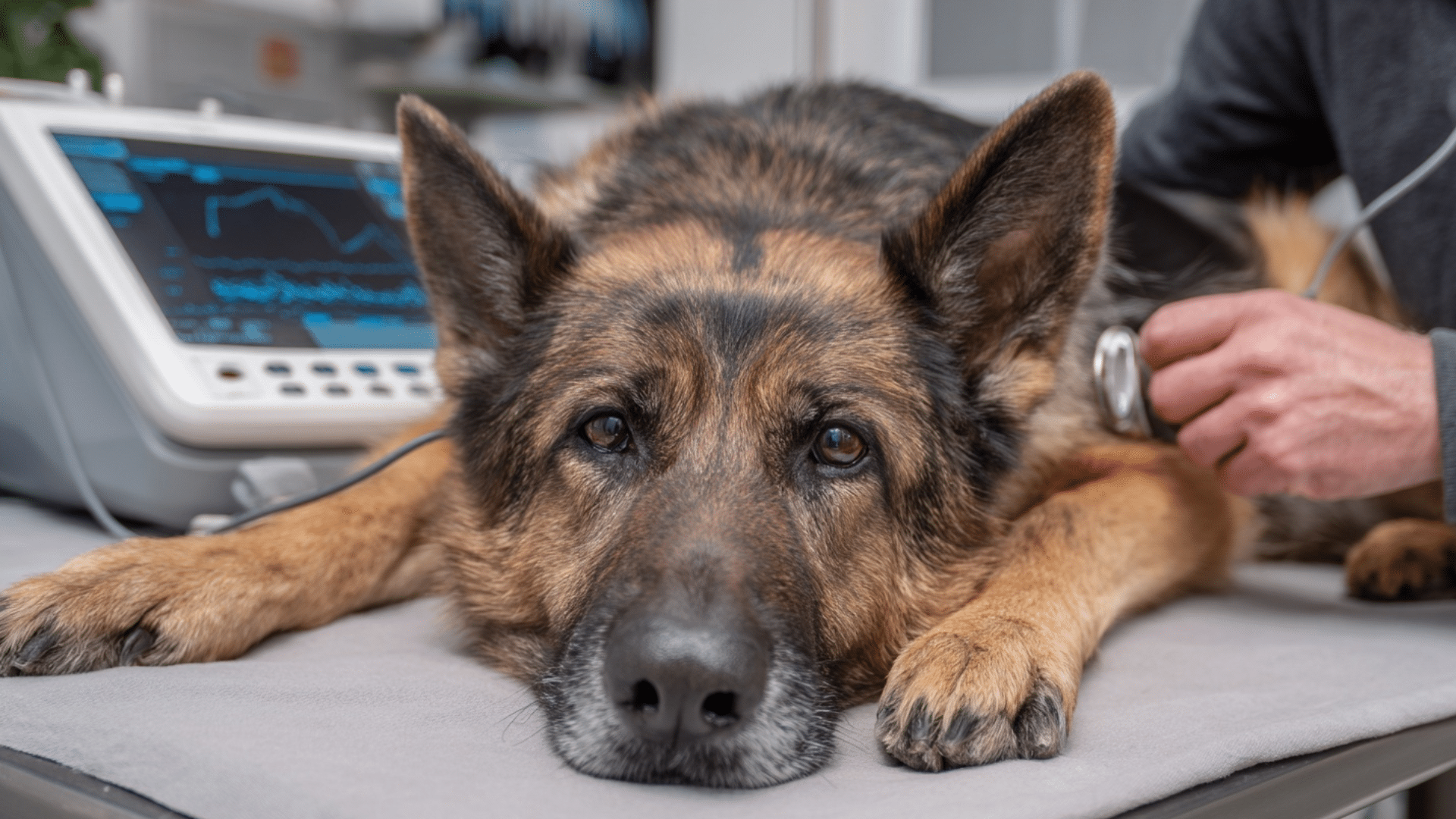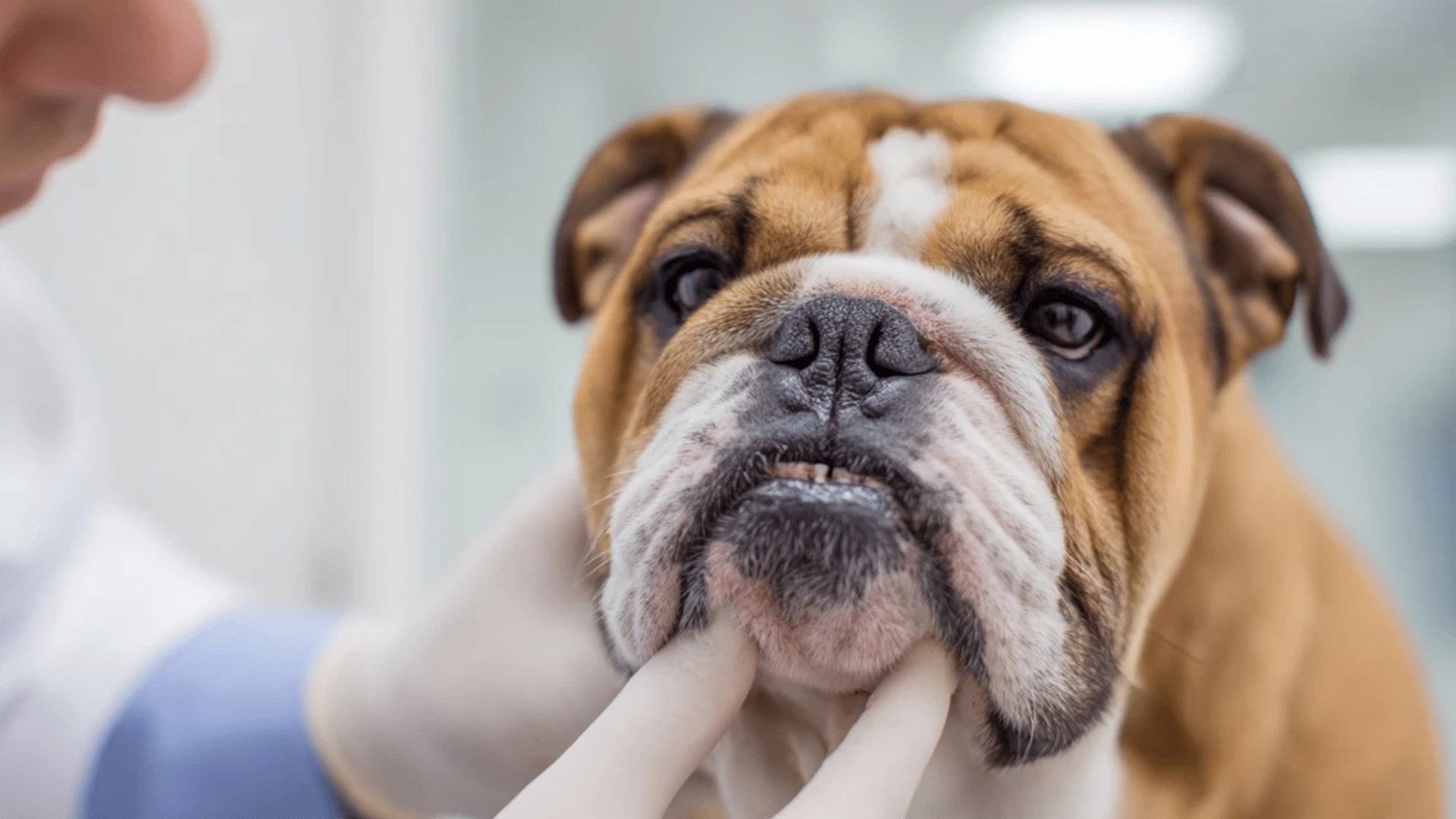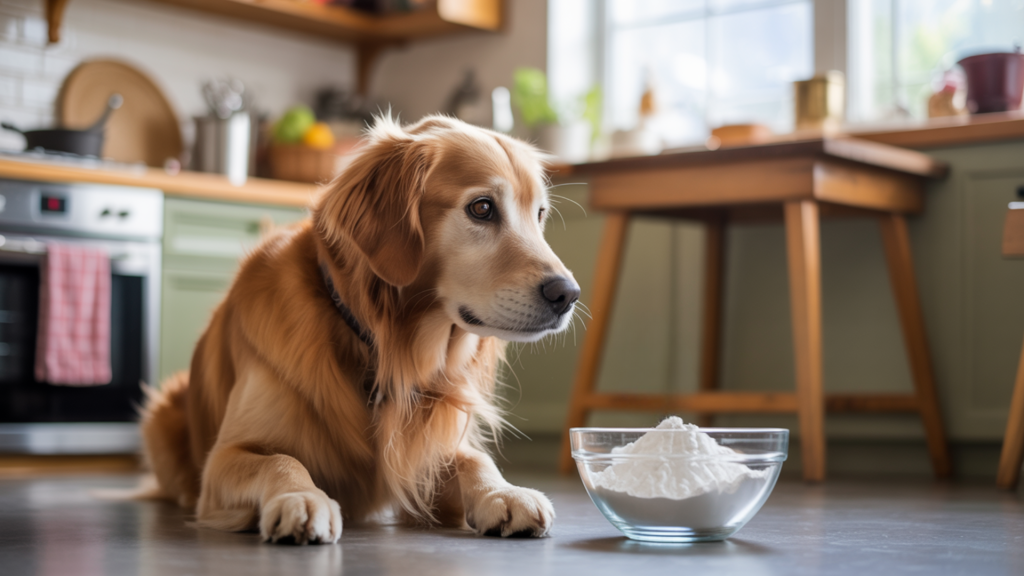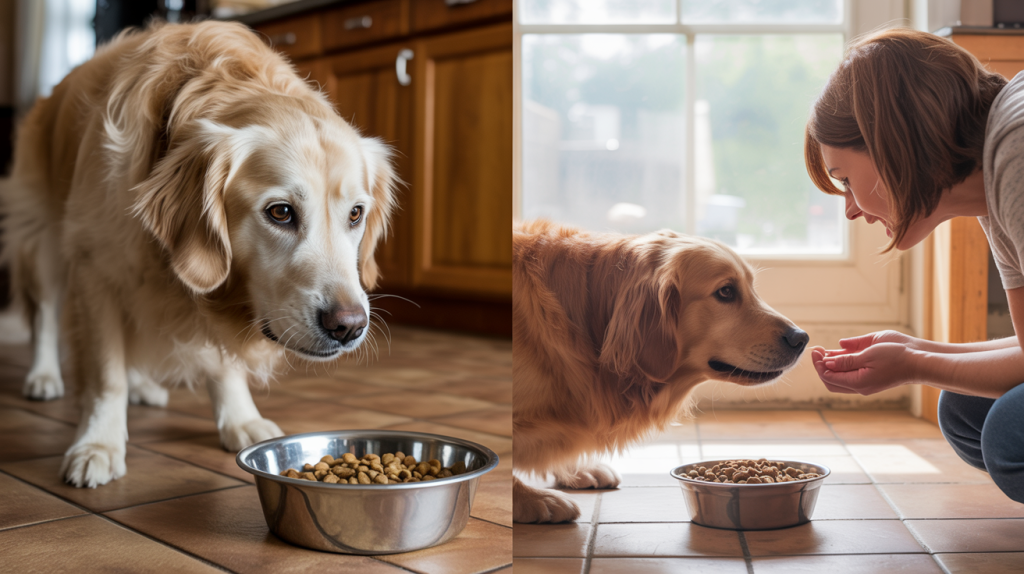Finding blood in your dog’s vomit is terrifying. Your heart drops, and you immediately think the worst. I get it, nothing prepares you for that scary moment.
Blood in dog vomit isn’t always a life-threatening emergency. Sometimes it’s minor, like irritation from throwing up too much. I’ll help you figure out what’s causing it and when to worry.
You’ll learn about common causes from simple stomach upset to serious conditions.
Understanding Vomiting Blood and Why It Happens
Hematemesis, or blood in dog vomit, is the medical term for vomiting blood. It’s not a disease itself, but a sign that something is wrong inside your dog’s body.
The blood can look bright red if it’s fresh or dark and clumpy, like coffee grounds, if it has been in the stomach for a while.
This can happen for many reasons, such as stomach or intestinal irritation, swallowing something sharp, infections, or more serious problems like ulcers or toxins.
Even a small amount of blood in vomit should be taken seriously. Knowing what it looks like and why it happens can help you act quickly to protect your dog’s health.
Coughing Up Blood vs. Throwing Up Blood
Coughing up blood and a dog throwing up blood are two very different things, even though they can look similar at first. The main difference is where the blood comes from.
Coughing up blood usually means it’s coming from the lungs or airways, while vomiting blood means it’s from the stomach or digestive tract.
Knowing the difference can help your vet find the cause faster.
| Feature | Coughing Up Blood | Throwing Up Blood |
|---|---|---|
| Origin | Lungs or airways | Stomach or intestines |
| Action Before | Coughing or gagging | Nausea and retching |
| Blood Appearance | Frothy or mixed with mucus | Bright red or dark “coffee grounds” |
| Other Signs | Trouble breathing, wheezing | Abdominal contractions, loss of appetite |
| Urgency | See a vet right away | See a vet right away |
Blood in Dog Vomit: Mild to Serious Causes
When blood appears in your dog’s vomit, not all causes are life-threatening, but they still need attention. Below are some mild to moderate reasons this can happen and why they matter.
1. Minor Mouth or Esophageal Irritation
Dogs that chew on sticks, bones, or other sharp objects can scratch the inside of their mouth or throat.
This can lead to small streaks of blood appearing in vomit, especially if the area is irritated further by eating or drinking. Usually, the bleeding is minor but should still be monitored.
- Vet visit needed: If bleeding continues or your dog shows pain when eating.
- Watch for: Drooling, pawing at the mouth, refusing to eat.
- Home care: Keep the diet soft for a day or two until checked by a vet.
2. Repetitive Vomiting or Retching
Frequent vomiting can cause irritation and tiny tears in the esophagus, known as Mallory-Weiss tears.
This happens when stomach acid and muscle strain damage the lining. While often mild, repeated vomiting can also point to an underlying problem.
- Vet visit needed: If vomiting happens more than twice in 24 hours.
- Watch for: Weakness, dehydration, worsening blood in vomit.
- Home care: Withhold food briefly, but never water, until vet advice.
3. Gastritis or Stomach Ulcers
Gastritis is inflammation of the stomach lining, often caused by spoiled food, medications like NSAIDs, or stress.
Stomach ulcers are sores that can bleed when aggravated. Both conditions can cause bright red or dark, digested blood in vomit.
- Vet visit needed: Ulcers can always worsen quickly.
- Watch for: Loss of appetite, drooling, abdominal discomfort.
- Home care: Avoid giving any medications unless prescribed by a vet.
4. Parasites and Infections
Worms like hookworms or infections like parvovirus can damage the stomach and intestines.
This bleeding can appear in vomit along with other symptoms like diarrhea and weakness. Puppies and unvaccinated dogs are at higher risk.
- Vet visit needed: Immediately for puppies or severe symptoms.
- Watch for: Weight loss, pale gums, bloody diarrhea.
- Home care: Keep the dog isolated if a contagious disease is suspected.
5. Foreign Bodies or Blockages
Dogs sometimes swallow toys, bones, or clothing, which can get stuck in the stomach or intestines. These objects may cut the lining or block digestion, leading to bleeding. This condition often requires surgery to prevent life-threatening complications.
- Vet visit needed: Emergency, do not wait.
- Watch for: Repeated vomiting, bloated belly, severe pain.
- Home care: Do not try to induce vomiting without vet guidance.
6. Hemorrhagic Gastroenteritis (HGE)
HGE causes sudden, heavy vomiting and bloody diarrhea, often leading to rapid dehydration and shock. The exact cause is unclear, but it’s life-threatening if untreated. Prompt vet care usually includes IV fluids and medication.
- Vet visit needed: Immediate emergency.
- Watch for: Large amounts of blood in vomit and stool, weakness.
- Home care: None rush to the vet right away.
7. Toxin or Poison Ingestion
Certain poisons, like rat poison or toxic plants, can cause severe internal bleeding. Some toxins stop the blood from clotting, while others directly damage the stomach. Symptoms can appear within hours or days.
- Vet visit needed: Immediate emergency, bring any suspected toxin packaging.
- Watch for: Bleeding gums, nosebleeds, and bruises on the skin.
- Home care: Do not wait for symptoms to worsen; act quickly.
8. Blood Clotting Disorders (Coagulopathies)
Diseases like hemophilia, immune-mediated conditions, or poisoning can prevent blood from clotting properly. Even minor injuries inside the body can then cause heavy bleeding, including in the digestive tract.
- Vet visit needed: Urgent internal bleeding can progress quickly.
- Watch for: Nosebleeds, blood in urine or stool, pale gums.
- Home care: Keep the dog calm and limit movement until seen by the vet.
9. Gastric Dilatation–Volvulus (Bloat/GDV)
Bloat happens when the stomach fills with gas and twists, trapping blood and cutting off circulation. This can cause vomiting with blood and is fatal without immediate surgery. Large, deep-chested breeds are at higher risk.
- Vet visit needed: Emergency surgery required.
- Watch for: Swollen belly, unproductive retching, collapse.
- Home care: None gets to a vet immediately.
10. Tumors or Cancer
Growths in the stomach or intestines can bleed slowly over time or suddenly if a tumor ruptures. This can cause recurring or sudden vomiting with blood, along with weight loss and decreased appetite.
- Vet visit needed: Always early detection improves outcome.
- Watch for: Chronic digestive issues, black tarry stools, lethargy.
- Home care: Follow the vet’s plan for diagnosis and treatment.
11. Organ Disease
Advanced liver or kidney disease can interfere with clotting or cause stomach irritation, leading to bleeding. These conditions often develop gradually and may be accompanied by other symptoms.
- Vet visit needed: As soon as symptoms are noticed.
- Watch for: Increased thirst, vomiting, yellowing eyes or gums.
- Home care: Feed only vet-approved diet until examined.
Immediate Actions to Take (Carefully and Calmly)
Seeing blood in your dog’s vomit is alarming, but staying calm will help you think clearly and act quickly. These actions can help protect your dog’s health while you arrange veterinary care.
1. Stay calm and keep your dog comfortable: Stress can make symptoms worse.
2. Observe and note details: Color and amount of blood, frequency of vomiting, and other symptoms.
3. Offer small sips of water: Prevent dehydration but avoid large gulps that could trigger more vomiting.
4. Withhold food for 12–24 hours: Only if advised by a vet, then reintroduce a bland diet slowly.
5. Do not give human medications: Many are toxic to dogs.
6. Collect a sample of vomit if possible: This can help your vet identify the cause.
7. Call your veterinarian immediately: Even small amounts of blood warrant professional advice.
When to Rush to the Vet
You should take your dog to the vet right away if you see any blood in their vomit, even if it’s just a small amount.
Go immediately if the vomiting is repeated, the blood is dark or looks like coffee grounds, or if your dog also has bloody diarrhea.
Other danger signs include pale gums, trouble breathing, a swollen belly, signs of pain, collapse, or extreme weakness. Puppies, senior dogs, and sick pets are at higher risk and should never wait for care.
In these cases, acting fast can save your dog’s life. Don’t try home treatment first; get emergency help immediately.
Veterinarian’s Toolbox: Diagnostics & Treatment
When a dog vomits blood, vets use a mix of tests to find the cause and treatments to stabilize and heal your pet.
These steps range from simple checkups to advanced procedures, all aimed at diagnosing the problem quickly and starting the right care.
Diagnostics Tests:
- Physical examination: Checks gums, abdomen, heart rate, and overall health to spot signs of shock or pain.
- Blood tests: examine organ function, blood cell counts, and clotting ability to identify internal problems.
- Urinalysis: Helps detect kidney issues or hidden infections.
- Fecal exam: Finds parasites or harmful bacteria that may cause bleeding.
- X-rays or ultrasound: Show blockages, tumors, or injuries inside the stomach and intestines.
- Endoscopy: Uses a tiny camera to look inside the stomach and esophagus; can sometimes remove objects.
- Toxin screening: Identifies poisons or toxic substances if suspected.
Treatment:
- IV fluids: Replaces lost fluids, supports blood pressure, and prevents dehydration.
- Anti-nausea medication: Stops vomiting so the stomach can heal.
- Gastroprotectants: Coat the stomach lining to prevent further damage from acid.
- Antibiotics or antiparasitics: Clear up bacterial or parasite infections causing bleeding.
- Blood transfusion: Restores blood lost through severe vomiting.
- Surgery: Removes blockages, repairs damage, or fixes twisted stomach (GDV).
- Specific antidotes: Neutralize certain poisons before they cause more harm.
Gentle Recovery & Prevention Tips
After treatment, helping your dog recover and preventing future problems is key. Below are six important tips to support healing and keep your pet safe.
1. Follow the vet’s recovery plan: Give all prescribed medications and stick to recommended rest times.
2. Feed a bland diet at first: Gradually reintroduce regular food once your vet approves.
3. Keep dangerous objects out of reach: Prevent chewing or swallowing harmful items.
4. Avoid giving human medications: Many are toxic to dogs, even in small amounts.
5. Maintain routine vet checkups: Early detection can prevent serious health issues.
6. Use parasite prevention year-round: Protects against worms and infections that can harm the digestive tract.
Conclusion
Blood in dog vomit is scary, but now you know what to look for. Minor irritation from too much throwing up? Keep an eye on it.
Dark blood, repeated vomiting, or a swollen belly? Get to the vet fast. You’ve learned the difference between small scratches and serious problems like poisoning or bloat that need emergency care right away.
Save this blog for those panic moments. Remember the key signs: coffee-ground blood, weakness, and pain mean don’t wait. Quick action saves lives. Keep dangerous items away from your pup and stick to regular vet checkups to prevent problems.
Has your dog ever scared you with blood in their vomit?











